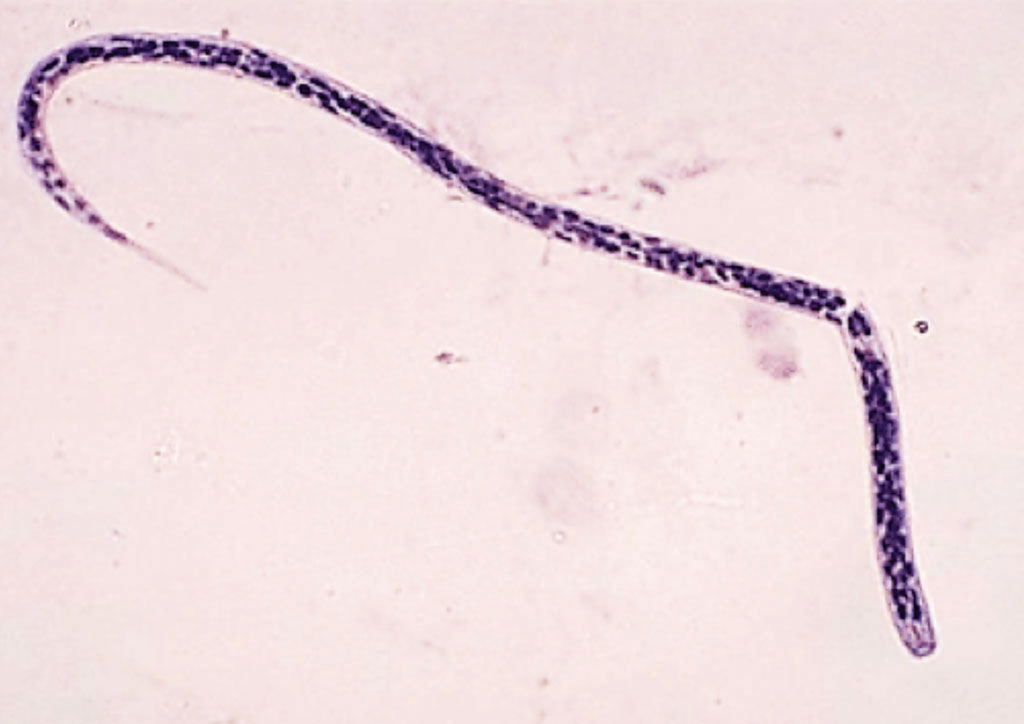Isothermal DNA Amplification Method Detects Onchocerca in Skin Biopsies
By LabMedica International staff writers
Posted on 20 Dec 2016
Onchocerciasis, infection with the filarial nematode Onchocerca volvulus is a neglected tropical disease, which is best known as river blindness. Diagnostic procedures for the diagnosis of infection with this nematode parasite are currently based on the microscopic detection of microfilariae in skin biopsies.Posted on 20 Dec 2016
Isothermal amplification provides a simple process that rapidly and efficiently accumulates nucleic acids at constant temperature. In contrast to polymerase chain reaction (PCR)-based amplification, no temperature cycles are required, which facilitates its integration into microsystems or portable devices.

Image: A photomicrograph of Onchocerca volvulus microfilarial larva from a skin snip biopsy stained with Giemsa (Photo courtesy of Dr. Lee Moore).
A team of scientists working with Janssen Diagnostics (Raritan, NJ, USA) collected skin biopsy samples as part of a field study in Ghana. Physical examinations were performed to identify those subjects having palpable nodules. From each participant two skin biopsies were taken, transferred individually into a single round bottom well of a 96-well plate, submerged in saline solution and after overnight incubation at room temperature each biopsy was examined microscopically and the emerged microfilariae of O. volvulus counted.
Genomic DNA was extracted from each skin biopsy using the OMEGA E.Z.N.A. tissue DNA kit (Omega Bio-tek, Norcross, GA, USA). The quantity and quality of extracted DNA was assessed with a ND-1000 NanoDrop Spectrophotometer (Thermo Scientific, Waltham, MA, USA). Loop-mediated isothermal amplification (LAMP) primers were designed targeting O. volvulus mitochondrial DNA. The detection limit of LAMP was determined to be 2 log copies/reaction as at this concentration a positive signal was reproducibly obtained in the assay.
The scientists reported that analysis of dilution series of synthetic DNA containing the targeted sequence shows a non-linear dose-response curve, as is usually the case for isothermal amplification methods. Evaluation of cross-reactivity with the heterologous sequence from the closely related parasites Wuchereria bancrofti, Loa loa and Brugia malayi demonstrated strong specificity, as none of these sequences was amplified.
Compared to a quantitative polymerase chain reaction, the LAMP assay had a sensitivity of 88.2% and a specificity of 99.2%. The authors concluded that they have developed a sensitive and specific loop-mediated amplification method for detection of O. volvulus DNA in skin biopsies that is capable of providing results within 30 minutes. The study was published on December 1, 2016, in the journal Parasites & Vectors.
Related Links:
Janssen Diagnostics
Omega Bio-tek
Thermo Fisher Scientific







 assay.jpg)






